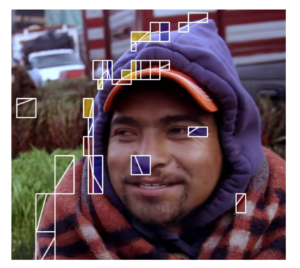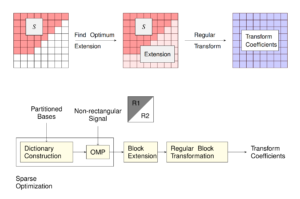
Non-rectangular Signal Transformation
Motivation
Transformation is an important part to achieve compression in video coding. Traditionally the frames of a video are partitioned into rectangular blocks to achieve compression. Intra or inter prediction is applied on the rectangular blocks to decorrelate the signal. But the error signal after prediction is called residual which is then transformed using sinusoidal transformation to decorrelate the signal further. There is an adaptation of further non-rectangular partitioning of these rectangular blocks to achieve more object-based compression to perform inter prediction. Although conducting separate predictions on each of these partitioning results in different signal statistics in both the regions, still the available transformation methods for these signals are either transformation of the entire block as one 2-dimensional rectangular signal or skip. Having an efficient method to transform both the non-rectangular block would be expected to be more efficient.
Goals

We are working on constructing an algorithm to transform non-rectangular blocks by finding a proper extension to result in rectangular signals and using existing block-based transformation. We use partitioned sinusoid bases using the same geometric partitioning as chosen for the prediction for this purpose. The region of interest part of these bases is used to construct a dictionary in order to find a sparse representation of the non-rectangular signal and the same solution is used to combine the other parts of the bases to find the extension. This way the block-based transformation would lead to compact signal representation and achieve compression.



